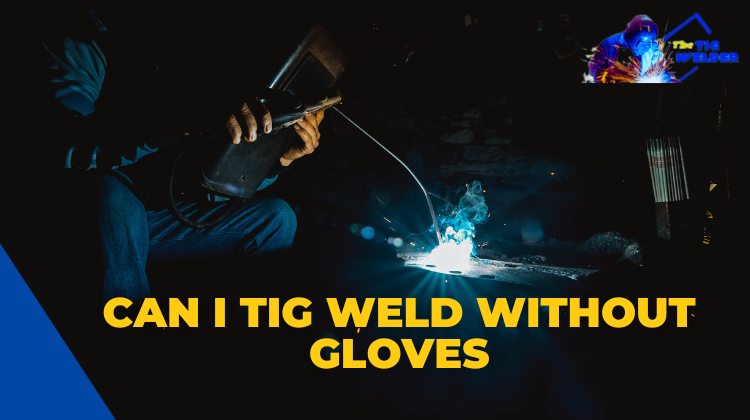Welding is a process that involves the use of high temperatures, intense light, and potentially hazardous materials, which can pose serious safety risks to welders if proper precautions are not taken. Wearing the appropriate safety equipment is essential in protecting welders from potential injuries or health issues from exposure to these hazards.
Some potential risks associated with welding include burns, electric shock, eye injuries, and respiratory problems. Wearing the appropriate protective equipment can help to reduce the risk of these injuries and ensure that welders can work safely and effectively.
For example, welding helmets or goggles protect the eyes from the bright light and intense heat produced during the welding process and from sparks and hot metals that may be generated. Welding gloves help to protect the hands from burns and abrasions and provide insulation against electric shock. Welding aprons, sleeves, and blankets can help to protect the body from burns, and respiratory masks and filters can help to protect the lungs from fumes and particles that may be inhaled during the welding process.
In summary, appropriate safety equipment is essential in welding to protect welders from the potential risks associated with this activity and to ensure they can work safely and effectively.

The Potential Risks of Tig Welding Without Gloves
TIG welding, or tungsten inert gas welding, uses a non-consumable tungsten electrode to produce an arc and a shielding gas to protect the weld pool from contamination. While TIG welding has many benefits, it can also pose certain risks to the welder if proper precautions are not taken, including the risk of burns, electric shock, and other injuries.
One of the main risks of TIG welding without gloves is the risk of burns. TIG welding involves high temperatures, which can cause burns if the welder comes into contact with hot metal or the welding arc. The risk of burns is particularly high if the welder is not wearing gloves, as the hands are exposed and can easily come into contact with hot surfaces or debris.
In addition to the risk of burns, TIG welding without gloves can also increase the risk of electric shock. TIG welding involves using electrical current to produce the arc. If the welder is not wearing gloves, they may be at risk of receiving an electric shock if they come into contact with the welding equipment or materials.
Other potential risks of TIG welding without gloves include eye injuries, such as arc eye and hand injuries from hot metal and debris. Wearing gloves can help to protect against these risks and ensure that the welder can work safely and effectively.
In summary, TIG welding without gloves can increase the risk of burns, electric shock, eye injuries, and hand injuries. It is important to wear appropriate protective equipment to minimize these risks and ensure safe and effective welding.
Factors to Consider
Several factors can influence whether to wear gloves during TIG welding. Some of the main factors to consider include the following:
- Type of material being welded: Different materials may require different levels of protection. For example, welding thin or highly reflective materials may require more protection to prevent burns, while welding thicker or more absorbent materials may require less protection.
- Length of the welding job: The length of the welding job can also be a factor in deciding whether to wear gloves. If the job is relatively short, gloves may not be necessary. However, gloves may be needed to provide protection and comfort if the job is longer or more demanding.
- Personal comfort and preference: The welder’s comfort and preference should also be considered. Some welders may prefer to wear gloves to protect their hands and prevent fatigue, while others may find gloves cumbersome or uncomfortable.
In general, it is important to consider the specific requirements and conditions of the welding job when deciding whether to wear gloves. The welder should also consider their comfort and preferences and the potential risks and benefits of wearing gloves.
The use of gloves while TIG welding is generally recommended to protect the welder from burns, electric shock, and other potential injuries. However, whether to wear gloves should be based on a careful evaluation of the specific circumstances and requirements of the welding job.
Alternatives to Traditional Welding Gloves
While traditional welding gloves are an important piece of protective equipment for welders, several alternatives can provide additional protection or be used in certain situations where gloves may not be practical. Some alternatives to traditional welding gloves include:
- Welding sleeves and aprons: Welding sleeves and aprons are designed to cover the arms and body and provide protection from burns, sparks, and hot metal. These garments are typically made of heat-resistant materials and can be worn over clothing or other protective gear.
- Welding blankets and curtains: Welding blankets and curtains are made of fire-resistant materials and can shield the welder or surrounding area from sparks and hot metal. These items can be hung or draped over work areas to provide additional protection.
- Heat-resistant gloves: Heat-resistant gloves are designed to protect the hands from high temperatures and can be worn while handling hot metal or other materials. These gloves are typically made of aluminized fiberglass or leather and may be used in conjunction with traditional welding gloves or as an alternative in certain situations.
In summary, several alternatives to traditional welding gloves can provide additional protection or be used in specific circumstances where gloves may not be practical. Welders need to consider the specific requirements and conditions of their work and choose the protective equipment that is most appropriate for their needs.
Conclusion
In conclusion, TIG welding, or tungsten inert gas welding, is a process that involves the use of high temperatures, intense light, and potentially hazardous materials, which can pose serious risks to welders if proper precautions are not taken. Wearing the appropriate protective equipment, such as gloves, is essential in protecting welders from potential injuries or health issues that may result from exposure to these hazards.
TIG welding without gloves can be dangerous and is not recommended, as it can increase the risk of burns, electric shock, eye injuries, and hand injuries. It is important to consider the specific requirements and conditions of the welding job when deciding whether to wear gloves and to consider factors such as the type of material being welded, the length of the job, and personal comfort and preference.
Several alternatives to traditional welding gloves can provide additional protection or be used in certain situations where gloves may not be practical. These alternatives include welding sleeves and aprons, blankets and curtains, and heat-resistant gloves.
Overall, the use of appropriate protective equipment is essential in welding to ensure the safety and effectiveness of the welder and to minimize the risks associated with this activity.

It’s been years since I got into welding as a side hustle. It’s been so long since Doing All kinds of welds for business and pleasure as this is my hobby. Being in this field I have learned from hands-on-experience also came to know what gears work and what doesn’t. The Tig Welder is my own platform where I use to share my experience.






Leave a Reply